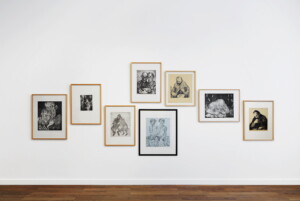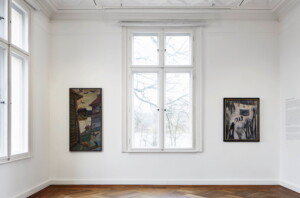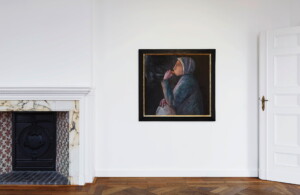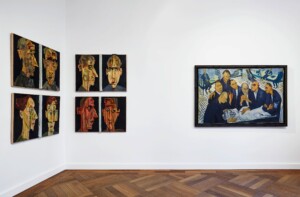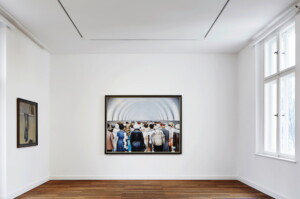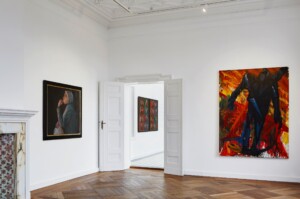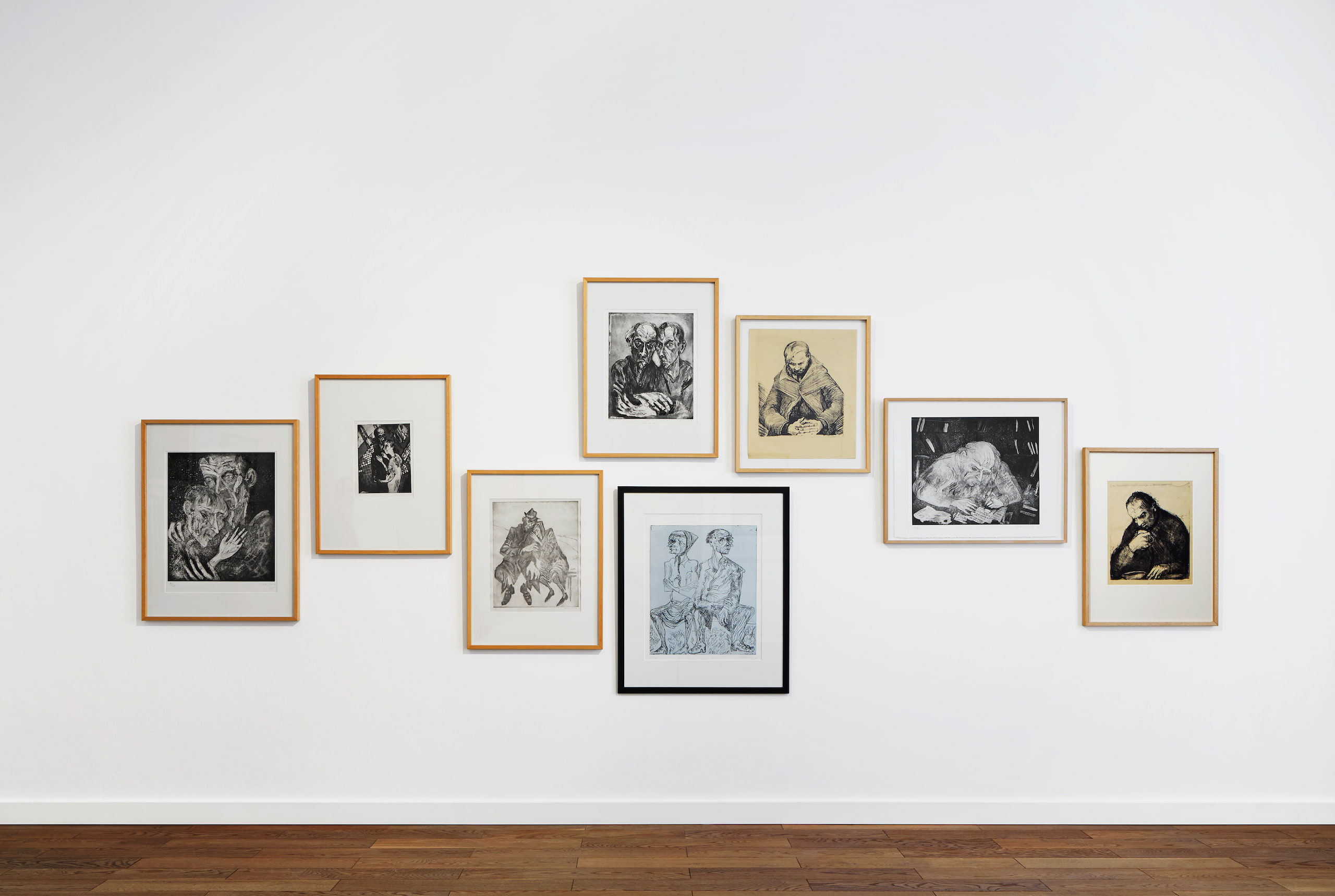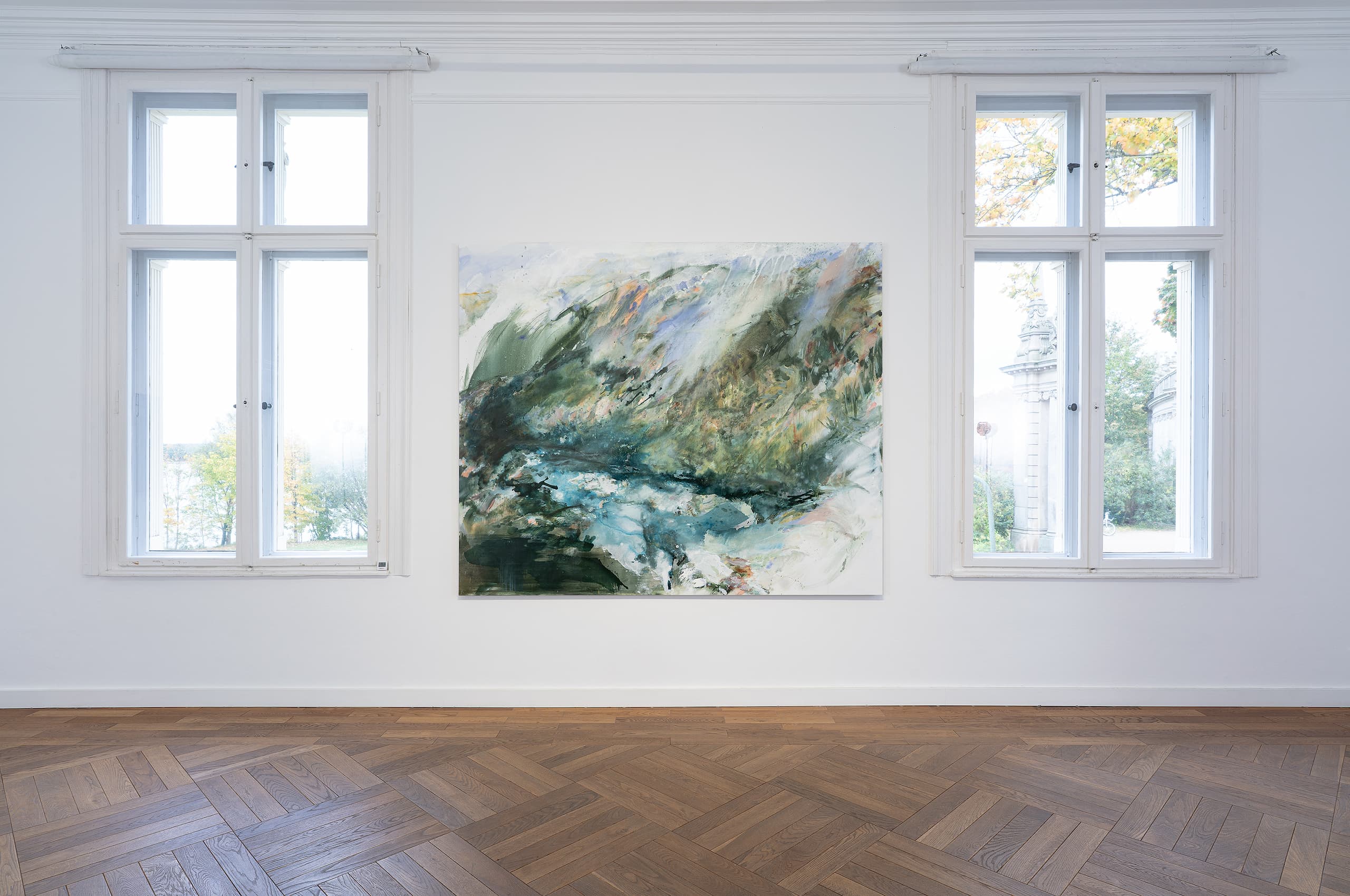Art from the Glasnost Era
From October 30, 2016 to February 26, 2017, Villa Schöningen presents around 50 works by Soviet artists critical of the system in its exhibition “Art from the Glasnost Era” – including works by Maxim Kantor, Lev Ilyich Tabenkin and Leonid Purygin. All works belong to the collection of Kunsthalle Emden and are shown for the first time in the Berlin area.
One of the first exhibitions at Kunsthalle Emden, founded in 1986 by STERN founder Henri Nannen, was The New Freedom of Soviet Painters (1987/88). At that time, the Kunsthalle was one of the first Western museums ever to present young, mostly critical artists, of whose existence the Western art scene had no idea until the opening of the Soviet Union – in the era of glasnost and perestroika. The works shown at that time are now on display at Villa Schöningen on the occasion of the 30th anniversary of the Kunsthalle Emden just outside the capital. Among them are works by the artists Maxim Kantor, Leonid Purygin, Lev Ilyich Tabenkin or Alexei Sundukov.
With this presentation, the exhibition house at the Glienicker Brücke illustrates its fundamental idea of freedom, which runs through the entire exhibition program, in a particularly impressive way.
The core of the exhibition consists of works by Maxim Kantor. In his works, he depicts extreme life situations, be it in a penal camp, in a psychiatric ward, or in general in an everyday life of the former Soviet Union that is characterized by scarcity. With his art he takes a stand and gives a voice to those affected. For this purpose, the artist chooses pictorial means related to expressionism. Waiting, almost apathetic figures characterize the paintings of Lev Ilyich Tabenkin; they stand in stark contrast to the dogmatically idealized depictions of peasants and workers in the paintings of Socialist Realism. Also represented in the collection, however, are artists such as Leonid Purygin, whose colorful and small-format paintings refer to the tradition of Russian icon painting.
Exhibition concept:
Katharina Henkel, Kunsthalle Emden, with Nora Jaeger.
The back story:
As a journalist, Henri Nannen had traveled to the Soviet Union early on: as early as 1955, he accompanied the then German Chancellor and simultaneously Foreign Minister Konrad Adenauer to a peace meeting with party leader Nikita Khrushchev in Russia. Although visits to important state museums were part of the cultural program during these visits, the art enthusiast Henri Nannen was hardly interested in the exhibited works of Socialist Realism propagated by the government. This attitude toward contemporary works by Russian artists changed in the early 1980s, when Nannen was invited to the residence of the then German ambassador to Moscow and saw a remarkably socially critical painting there: with it, his enthusiasm for contemporary, nonconformist art was awakened. He then initiated an exhibition that traveled through West Germany and acquired his first works – the basis for a new collection theme that was still unknown in the FRG.
Beginning in 1986, Henri Nannen, on his own initiative, roamed through studios in Moscow and Leningrad/St. Petersburg, discovering works of art that depicted a critical examination by young artists of national changes and grievances. The result was that early exhibition at the Kunsthalle Emden with images of unsparing directness.
 © Villa Schöningen, Fotos: Noshe
© Villa Schöningen, Fotos: Noshe
 © Villa Schöningen, Fotos: Noshe
© Villa Schöningen, Fotos: Noshe
 © Villa Schöningen, Fotos: Noshe
© Villa Schöningen, Fotos: Noshe
 © Villa Schöningen, Fotos: Noshe
© Villa Schöningen, Fotos: Noshe
 © Villa Schöningen, Fotos: Noshe
© Villa Schöningen, Fotos: Noshe
 © Villa Schöningen, Fotos: Noshe
© Villa Schöningen, Fotos: Noshe
